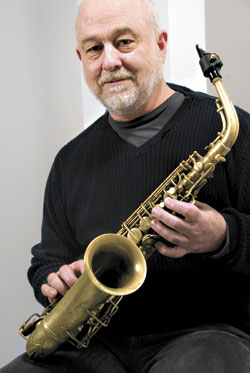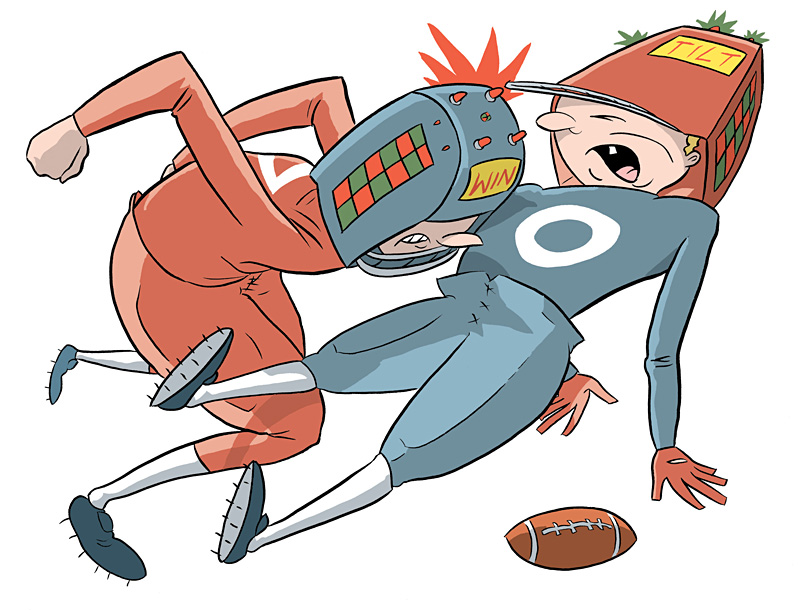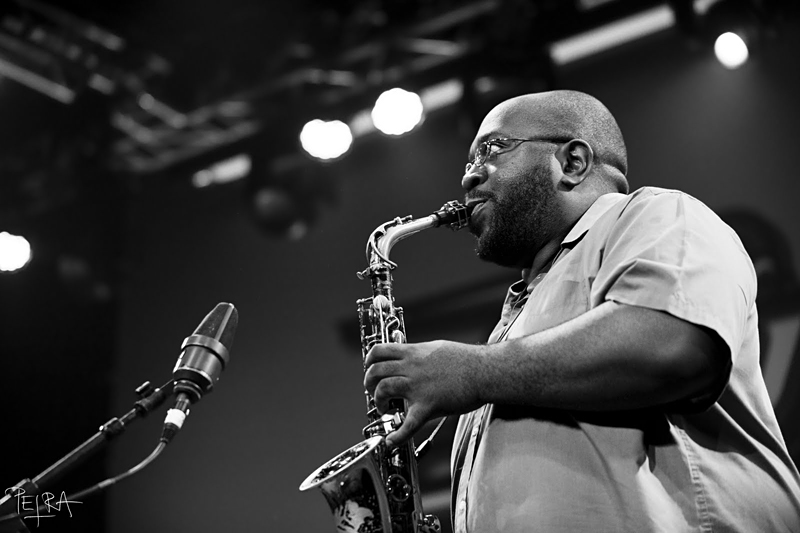That Wally Shoup was a man unlikely to experience spectacular commercial success was apparent early. Arriving in Seattle in the mid-’80s, he managed to get some of his painted-silk scarves—with their distinct muted colors and aboriginal-like patterns—into some area boutiques. But then shopkeepers would say, “We want more of these, and we don’t like these,” he recalls. “And I’d say, ‘Well, that’s your opinion.'” Likewise, store reps wanted pieces that customers could order in advance. Shoup’s response: “Well, I’m an artist.” How could he know what he’d come up with tomorrow? Needless to say, Shoup’s future in retail was limited.
Then again, anyone who turns to Shoup for something preordered and prespecified could not be barking up a more poorly chosen tree. Shoup’s entire cellular structure pines for the spontaneous, the unplanned, the unruly. And not just in visual art. For two decades he’s been at the center of Seattle’s free-improvisation scene—a fertile but perpetually obscure underground, where the intense energy and volume of guitar rock meet the open soloing of jazz, but without any formal structures of rhythm or song. It’s always a hard sell, and “the problem is, I’m not a salesman,” says Shoup.
But he’s been doing something right lately, as this fall he’ll have a critical mass of public exposure that’s damn near unprecedented. It starts with a major exhibit of his paintings at Wall of Sound (beginning Oct. 5). Then he’s got a series of shows around town with his trio, courtesy of a city of Seattle grant—the 63-year-old artist’s first. (“I haven’t really participated in the grant game,” he says.) Finally, he’s got a high-profile quartet gig with the Earshot Jazz Festival, Seattle’s invaluable three-week celebration of jazz and world music (Oct. 19–Nov. 4). While Earshot brings in big names from New York and around the globe, the fest also provides home-based artists a more visible platform than they’re typically afforded.
Raised in a North Carolina family that “would not have seen ‘artist’ as a viable way of life,” Shoup says art “eventually just came bursting out of me” in his early 30s, when he picked up both the saxophone and the paintbrush. In recent years, his paintings have been seen most often at Garde-Rail Gallery, Seattle’s home for “outsider” or “folk” artists, many of whom, like Shoup, are from the South. No one would mistake the articulate Shoup for an uneducated rube, but his pieces have an unstudied, “naive” quality to their shapes, colors, and themes. And they bear an earthen texture reminiscent of Jimmy Lee Sudduth—perhaps the most famous in Garde-Rail’s stable—who paints with mud.
Padding around his old apartment in the CD, Shoup says he creates his textured effect using commercial painter’s joint compound mixed with coffee grounds. Smearing this concoction, unevenly, onto the canvas before painting “creates something that’s like the surface of a rock or the side of a building,” he says. “I try to use the texture [in the work], but not make it the whole point.”
Shoup’s paintings have often adorned the covers of his recordings, and lucky recipients of his CD-Rs have sometimes found an original watercolor inside—square slices from a larger sheet that Shoup says he creates at a fevered pace. “It’s kind of like improvising. You let the chips fall where they may.” Over the years, Shoup’s art has become a powerful accompaniment to his music, each enriching the other.
Audiences will have a chance to experience that intersection directly at Shoup’s opening night at Wall of Sound, where he’ll perform with drummer Dave Abramson in front of a great wall of his work. There’ll be varied sizes and styles jumbled and juxtaposed. “It’s very different from a gallery, where it’s boom, boom,” he says, his hands describing dots along a horizontal line.
Shoup does not like to get too caught up in the connections, if any, between his work on canvas and his work in sound, but he allows that, as a musician, he’s “very influenced by visual forms.” You’ll hear that immediately: Hard-blowing and aggressive with a subterranean pulse, Shoup’s music feels more about shape, surface, and movement than melodic lines. “A tree has different rhythms from a stream or boulders atop one another,” he says; and those, more than the architecture of a jazz standard, are his models.
Though Shoup has performed with many of the power names in new music (such as Nels Cline, who’ll be here for Earshot, too), and has won some notoriety among rock audiences for his work with Sonic Youth’s Thurston Moore, he says he “sensed right away that the jazz world in Seattle was never going to respect what I’m doing.” Young, metal-minded listeners without a single Archie Shepp record in their collection often have more open ears than the jazz crowd, he says.
Shoup admits “there’s an implied critique in the way I play.” But, he says, “I have no patience for people who say this or that music ‘sucks.'” He relies on the “music-as-river” metaphor. “Can you ride it, balance it? I’m always going for that, and with some people, you get there quicker and stay there longer. I just do my thing and hope there’s a few people around who resonate with it.”








